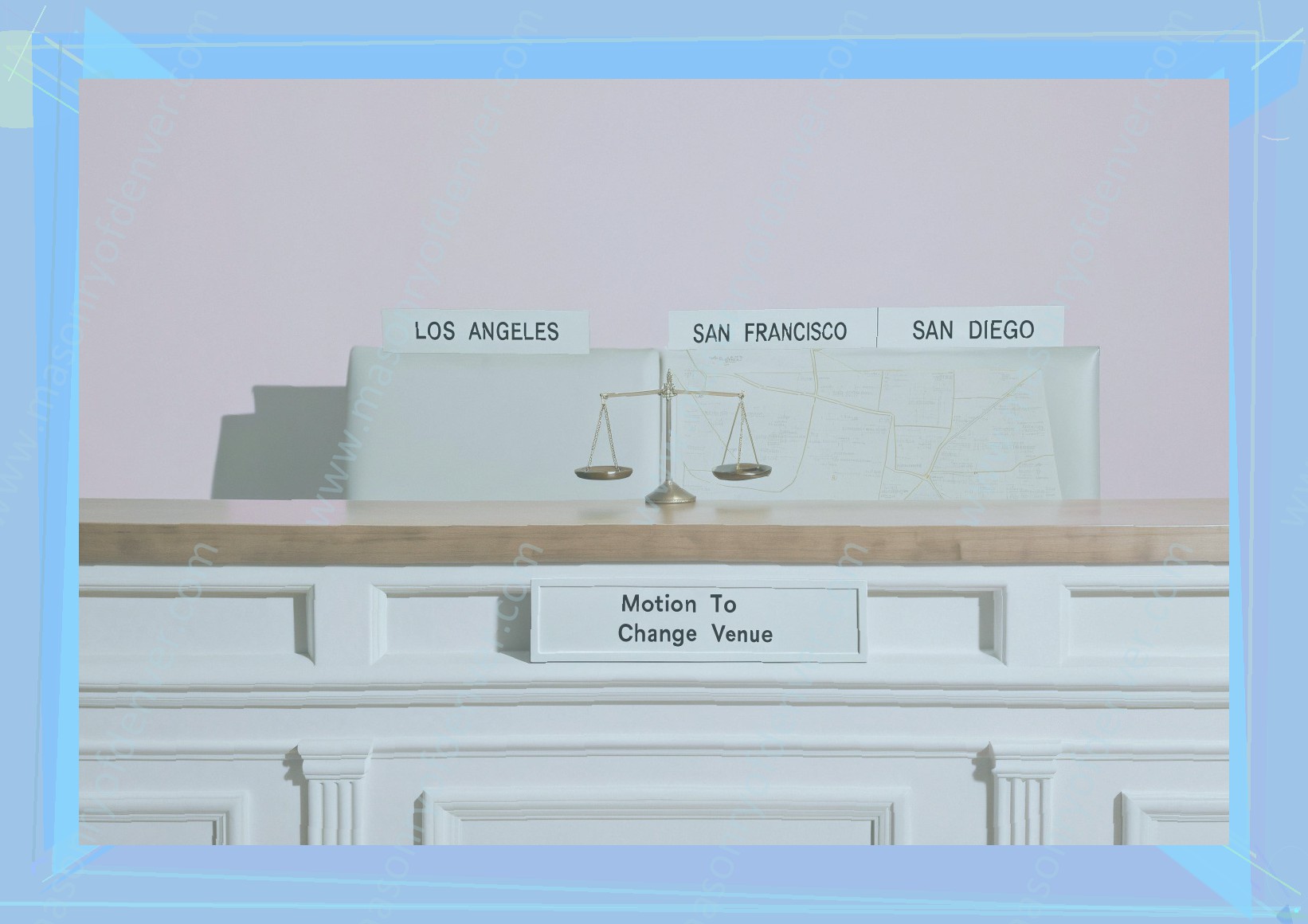What is a Change of Venue
A request for change of venue is made before the Immigration Court, and informs the Judge that the respondent (or their lawyer) wants the case to be moved to a different Immigration Court than where it is currently taking place. The new court should be the one closest to your home, where you actually live.
An application is made by submitting a written motion, called a "motion to change venue", to the Judge with jurisdiction (the Judge with jurisdiction is the judge who currently has your case).
In removal court, the presiding judge is an immigration judge. The judges in Immigration Court are referred to as "IJ’s" or judge. These judges only hear matters regarding removal charges and motions, applications, and petitions for relief from removal or inadmissibility.
There is one Immigration Court in California, which is located in Los Angeles. In recent years, there has been a new court opened in Lancaster, California. Each court has certain judges, who may have done things differently than other judges. When applying for a change of venue, you want to request a new venue that is not likely to be the most overworked court. For example, you may want to avoid the mostly highly litigated court in Los Angeles when requesting a new venue. In the Los Angeles court, the judges work really hard – with extraordinarily high numbers of cases per day (up to 36), with an enormous numerical backlog currently of almost 1,000 cases, and receive very limited assistance from well-intentioned ICE attorneys who are currently stretched so thin that they cannot adequately staff hearings . If you can get a new venue in San Francisco or San Diego, there may be more time and fewer cases in the pipeline. You can see the current immigration courts with their overworked judges here: EOIR Court Listing.
Most of the time you must file your application at the Immigration Court where your case is currently being heard. The request must be in writing and must make clear that you are requesting a motion to change venue. The motion should be addressed to the immigration judge currently hearing your case. If there is time before the judge’s ruling on the motion, the judge usually has the option to send your application to the court that you would like your case to be sent to, and then the judge at the receiving Court will get to decide if this new venue is convenient for them. If the receiving judge does not want the case, the Court will send the case back to the original court. If the receiving judge agrees to accept the case, the first judge will have to reassign the case to the new Court. This is a matter of the new judge’s discretion.
Most of the time you must be present at the next hearing before the immigration judge in order to speak your reasons why you are requesting a change of venue. The judge sometimes wants to hear from you directly. The judge may also want to confirm that you intend for your case to be heard in the new city. There is no fee to file a motion to change venue. This is a free request to make the hearing process easier.
Criteria for Your Eligibility to Change Venue
The following are common circumstances which might warrant a change of venue:
- The respondent currently resides in the area where the new venue is located, rather than the area in which the current venue is located;
- The respondent can show that she or he was never served with notice of the initial hearing; or
- The respondent would suffer significant hardship if the venue is not changed.
Any decision regarding a respondent’s change of venue request will be made on a case-by-case basis by the individual Immigration Judge who is assigned to her or his case.
The Procedure: Submitting the Change of Venue Application Form
Filing a change of venue form is often the next step after the filing of an application for asylum in court. In some cases, the next hearing date will be so far away from home that travel will impose burdens on the respondent or their family members. In other cases, there may be compelling reasons to hold the hearing closer to home, such as legal representation or family members. The process is fairly simple.
A previous order of an immigration judge or the Board of Immigration Appeals (BIA) will be the basis of the motion. A motion to change the venue must be filed directly at the court where the individual’s case is being heard (the motion should not be submitted at the BIA). The filing requires a notice of appearance (if there is new legal counsel) and a copy of the immigration judge’s or the BIA’s Order. These documents should be addressed to the immigration court with proper jurisdiction over the new location.
If the U.S. Immigration and Customs Enforcement agency (ICE) issued a notice to appear, we suggest that a motion to change venue be filed in all cases (instead of a request for a change of venue). The motion to change the venue should be filed just as any other motion to change venue. However, it is also important to send a copy of the motion to the ICE office of General Counsel to ensure that they are aware of the change in location. If the order was issued by an immigration judge in a detention center, a motion is only necessary where the new venue is outside the current judicial district.
Additional copies of the motion and notice of appearance should be properly served on all parties – including the Office of Chief Counsel. There is no fee associated with the motion.
The Law behind Change of Venue
When an individual files for a change of venue (or requests a change during the course of an immigration proceeding), the Court where the application is filed has discretion as to whether it will grant or deny the motion. The change of venue is not automatic. However, if a change of venue is approved, the new Court will be bound by the previous Court’s findings and written decisions controlling the case. For example, an individual with pending asylum proceedings under the jurisdiction of the Dallas Immigration Court may request a change of venue to Charlotte, North Carolina. The Dallas Immigration Court will transfer the file containing a previous positive interview regarding the applicant’s fear of returning to his or her country, as well as any prior negative credibility determinations that could be binding.
The facts and supporting documents related to the asylum application (such as medical records, affidavits, and the asylum application) will become part of the record in the Charlotte Immigration Court where the asylum seeker can check in, receive future notices, and appear for hearings. If a person applied for asylum while ignoring the immigration judge’s orders to appear before the Court, then a change of venue to another Court would allow the original court to reconsider the prior orders. The transferred case is treated as if the application had been filed originally in the new Court.
The facts of each case will dictate the likelihood of success for a motion to change venue, but as with many other motions and filings in immigration and immigration court, successfully requesting a change of venue requires useful knowledge of the law, the rules, and the process.
Addressing Challenges and Delays
Once your motion is filed, you may experience some challenges or delays in the process of a change of venue. You don’t need to panic if this happens because we’ve encountered several common issues and have a variety of methods to resolve them.
Challenge: The Immigration Court Denial
Sometimes, the immigration court has denied the venue change. The denial is usually a result of how the move has been presented on the application, what judges are available in certain locations and whether the judge feels there will be resource challenges in the location you are requesting. In general, a refusal might indicate that the court might be busier than the applicant’s current location.
Resolution: Appeal to BIA
When the Boston immigration court has made a change of venue denial, the appeal process consists of filing the notice of appeal with the Board of Immigration Appeals (BIA). Your attorney will file the NTA as a motion to the BIA. Then, the BIA will set a date for a hearing before the reviewing BIA judge. That judge will then listen to your attorney’s arguments and rule whether there were any errors by the immigration court judge in denying your request for a change of venue.
Challenge: No Notice to Appear (NTA)
In some cases, there is no notice to appear and the immigration judge must suspend or withdraw the proceedings you are currently in. If no NTA has been filed, the attorney must submit a motion to the immigration court judge where the NTA is still pending for the change of venue so the judge accepts the BIA’s request to vacate the proceedings .
Challenge: Pending Adjustment Application
If you have an adjustment application that is pending in one court, the request for a change of venue must include a motion to terminate the court where the original application was filed. When you have a pending adjustment application that hasn’t been resolved, you can request that it be terminated and then refiled in the new state.
Challenge: Outdated Address Information
Immigration judges want to ensure that you have updated address information if you have moved within the previous 6 months.
Challenge: "No-Show" Removal Proceedings
This is an occurrence in the Boston immigration court system where there is a perceived lack of due process and a massive backload of cases. This sometimes leads to the deportation of immigrants who are in removal proceedings. An Immigration and Customs Enforcement (ICE) agent may enter into a removal hearing in their place so Judge can deport them so that their case can go "off the books." They don’t have the right to this but it happens. If you have received notice from ICE that a removal order was entered in your absence, you can motion for it to be vacated and for the case to be reopened.
Challenge: Lack of Resources
Some of the variation in cases might be a result of lacking resources in other districts. A change of venue from Boston, for example, that means many times you’re looking at adding at least a one-year delay for your hearing. While there will be some differences across the board, anything more than a year is concerning.
Challenge: Travel and Work Authorizations
In some cases, people may lose their ability to travel, work and get a driver’s license while the change of venue and adjustment of status is pending.
Getting it Right: Insider Tips on Changing Your Venue
Timeliness: A change of venue application should be made as soon as possible. An application filed late could be denied merely on that basis, unless there is an extraordinary reason for a delay in filing.
Application contents: The application requesting a change of venue must be in letter form, addressed to the immigration judge, with any relevant supporting documentation attached. The letter should indicate the current court and A-Number, the respondent’s name and address, and the respondent’s attorney’s name and address. The letter should include a proposed new venue, ideally the court local to the respondent’s home of record, and include a statement of the client’s actual address (not just your mailing address). It should give the reason for the change of venue request and whether or not the Department of Homeland Security (the government) consents to the request. If you cannot get DHS’s consent, you should explain to the court what attempts you have made to contact DHS in advance of filing the application. You may want to inform the court whether the government has agreed to waive an in-person hearing and whether the client will waive the required 8-week notice period. Finally, it is advisable to request a telephonic hearing if the government does not consent.
Seek Legal Guidance
If there has been a recent change in your residence and you believe your case should proceed in a different immigration court, it is important to seek the advice of a qualified immigration lawyer as soon as possible. An experienced attorney can help you to: With the assistance of your team of seasoned advocates, you can determine whether to pursue an Official Notice of Change of Address with the new court, or to Request the Transfer . Your attorneys will also assist in getting your case transferred, if that is the course you choose. Moving forward with a change of venue can be a complex matter, but it is one that may provide the opportunity for a fresh start in the immigration process.



